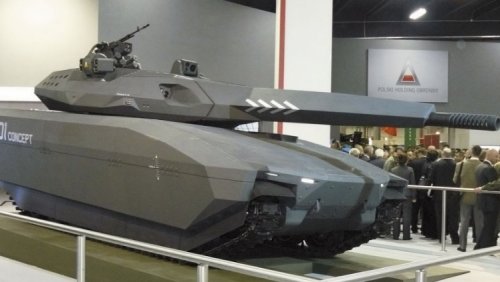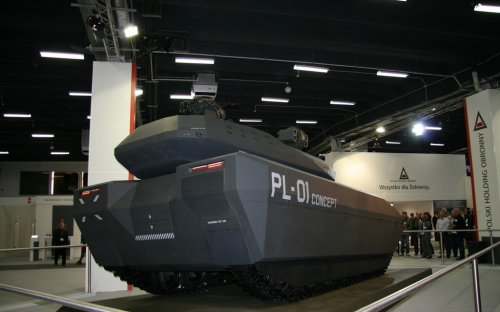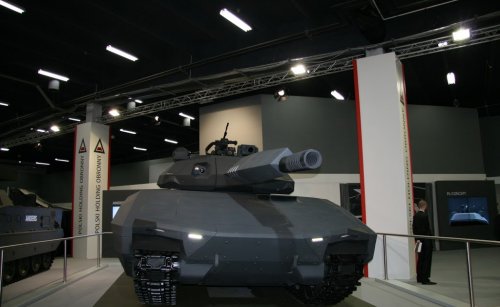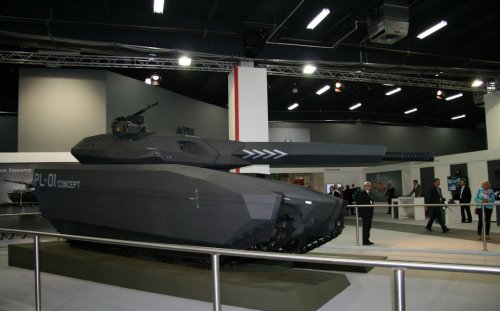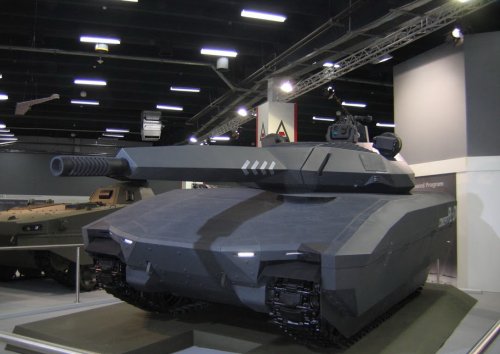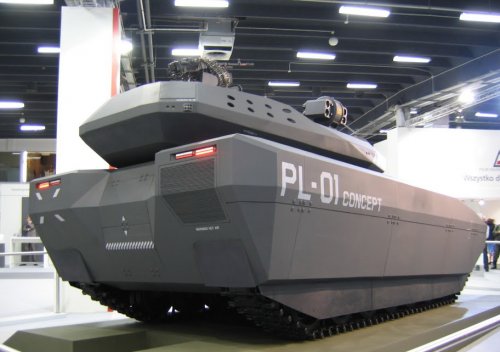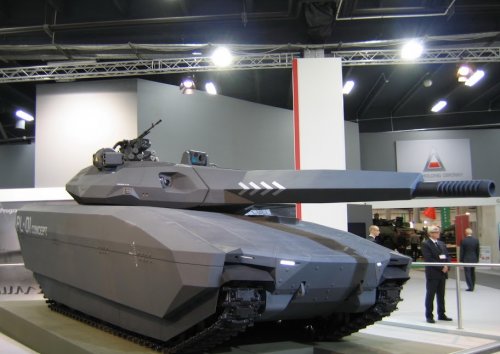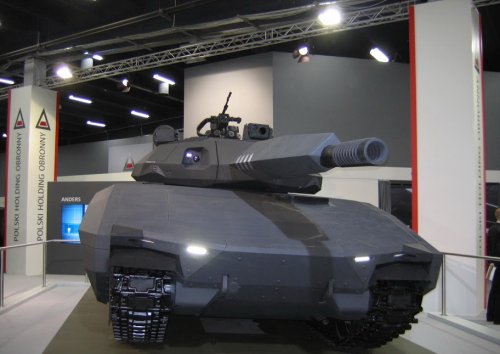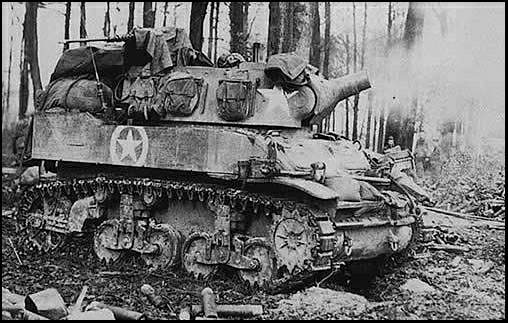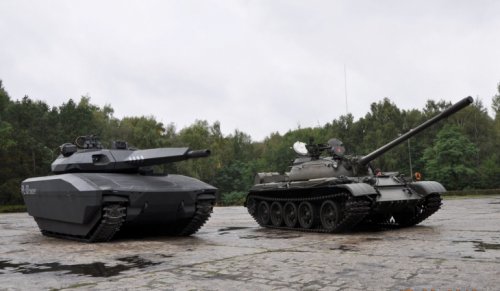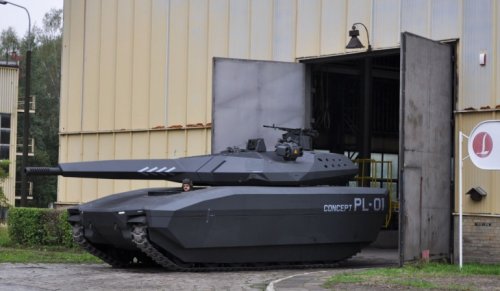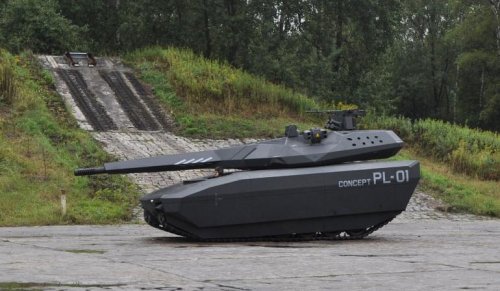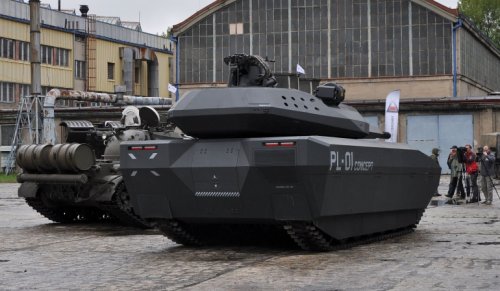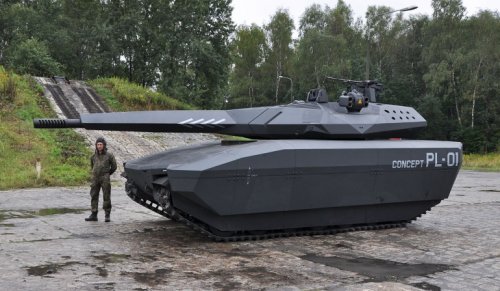Obrum has unveiled the PL-01 Concept, a new armoured fighting vehicle (AFV) concept, at the MSPO 2013 defence industry exhibition in Kielce, Poland.
The PL-01 was developed by Obrum, part of Poland Defence Holdings (PDH), with co-operation from BAE Systems, and is classed as a Direct Support Vehicle (DSV, or WWB in Polish) by the firm. The vehicle features a three-person crew, an auto-loading 120 mm main gun in an unmanned turret, and a chassis based on that of the BAE Systems Hägglunds CV90 AFV.
The development of the DSV is closely tied with the Polish Armed Forces' plan to create a Universal Modular Tracked Platform (UMPG), featuring a common chassis across different variants. Planned variants of UMPG include a DSV; command vehicle; armoured recovery vehicle; and mine clearing vehicle.
The future of the DSV is connected with the Polish National Centre of Research and Development's (NCBR's) fourth defence competition. The NCBR is the implementation agency of the Polish Ministry of Science, with a scope to manage the assets of strategic research programmes. One of the NBCR's competition topics for 2013 is a 42-month-long programme to develop the DSV up to prototype stage.
To meet the time requirements and to reduce risk, the Polish Ministry of Defence (MoD) requested that a proven chassis was used. Analysis by the Polish military indicated that the CV90 is of suitable weight and still has development potential. BAE Systems co-operation with PDH is currently limited to the initial design work and the transfer of components needed to complete the concept vehicle.
The PL-01 is 7 m long, 3.8 m wide and 2.8 m high, and with additional armour and anti-mine protection weighs 35 tonnes, although the Polish Army plans to cut 2-3 tonnes of this.
The DSV's 120 mm main gun is capable of at least six rounds per minute, while a 105 mm gun is expected to be an option for potential export customers. The turret features two ammunition drum magazines, with 12-16 ready to fire, and up to 29 rounds stored in the vehicle's chassis compartment. Alternatively, this space can be used for transporting up to four soldiers.
The supplier of the main armament has not been chosen, but Belgium's CMI Defence is understood to be one likely source. Paul Thorton, general manager of CMI Defence, has proposed to manufacture the CT-CV 105HP in Poland. CMI Defence also recently purchased the rights to the RUAG Defence 120 mm smooth bore gun. The coaxial machine gun for the army will be the UKM-2013C (modified version of UKM-2000C). The fire control system would include day/thermal sights with integrated laser rangefinder, while the commander's panoramic sight works in hunter-killer mode.
The additional armament - used for fighting in urban areas - would be a remote weapon station (RWS) with 7.62 mm or 12.7 mm machine gun or 40 mm grenade machine gun. The PL-01 Concept vehicle shown at MSPO is equipped with a ZSMU-1276/ZSMU-40 RWS from ZMT. The Polish-designed ZSMU-1276 passed additional military testing in July, and is ready for serial production.
The vehicle is protected by multi-layer ceramic-aramid armour, in excess of STANAG 4569 level 5 over the frontal arc (to defeat 30-40 mm calibre armour piercing rounds) and level 4 on the flanks and rear of the PL-01, with additional modular armour. The concept model shown in Kielce has an integrated the mock-up of BAE Systems' active protection system.
Source:
http://www.janes.com/article/26624/mspo-2013-pl-01-concept-vehicle-unveiled

